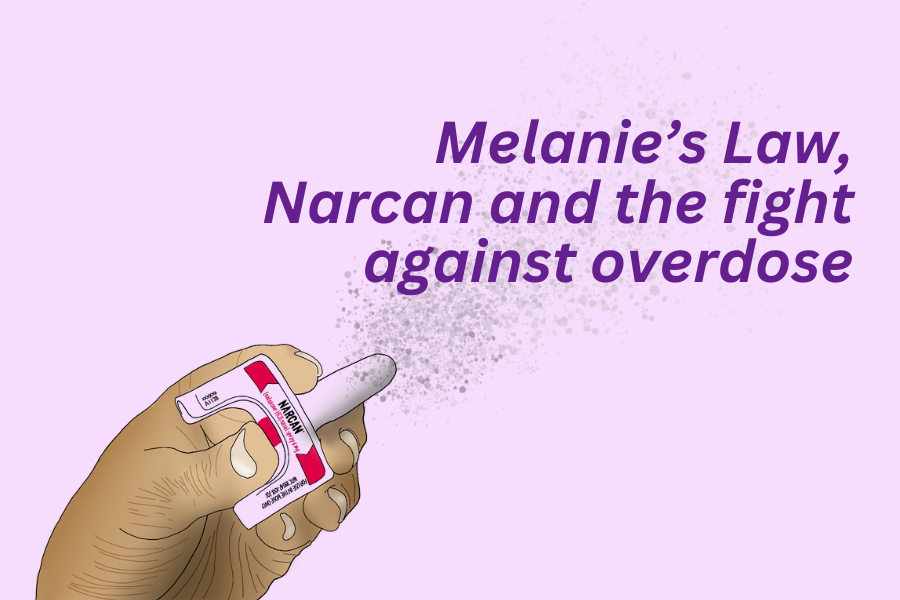- Amid soaring overdose deaths, Melanie’s Law tackles fentanyl in schools, emphasizing prevention strategies.
- New resources are being put towards staff training on Narcan for swift intervention.
- School administration is in the planning stages of adding Narcan kits in select areas around campus.
In the past six years, the number of drug-overdose-related deaths has grown exponentially. Fentanyl, a highly potent narcotic that rapidly suppresses breathing, is now responsible for one in five youth deaths in California. In a groundbreaking move to combat fentanyl overdose, Melanie’s Law, signed by Gov. Gavin Newsom on Oct. 13, is currently being implemented in schools throughout the state, including Lynbrook. While Santa Clara County has already taken the initiative to prevent deaths induced by overdoses, this legislation co-opts current county guidelines by requiring school safety plans to address fentanyl overdoses from grades seven to 12, allowing overdose emergencies in school to be addressed in an efficient manner.
“In Santa Clara, we had 12 opioid overdoses in 2018,” said Mira Parwiz, Chair for Santa Clara’s Opioid Overdose Prevention Program. “This year, we’re at 141 and counting.”
Pre-existing laws indicate that volunteer staff members who have undergone training, along with Narcan (also known as Naloxone nasal spray), are support resources for schools in case of an overdose emergency. Narcan is one of the few substances that can revive somebody experiencing an overdose. When administered into a victim’s nostrils, it can help reverse the overdose and restore the person’s breathing to normal within three minutes or quicker. Opioid overdose prevention training takes an hour, as volunteer staff are instructed on how to identify early signs of overdose and administer Narcan in case of an emergency at school.
Melanie’s Law, also known as Senate Bill 10 Cortese, was enacted in honor of Melanie Ramos, a 15-year-old Hollywood student who mistakenly ingested a pill laced with traces of fentanyl. The Los Angeles Police Department suspects that Ramos was told that the pill was a standard percocet, which is a prescribed painkiller with addictive properties. Ramos was found unconscious inside the school bathroom nearly eight hours after her family was told that she went missing.
The first step to addressing an overdose emergency after calling 911 is to determine if the victim exhibits symptoms of overdose, including but not limited to: pinpoint pupils, clammy skin and restricted breathing. Trained staff within the school should act swiftly, first administering one dose of Narcan into the victim’s nostrils, then following up with CPR until consciousness is regained. The effects of Narcan’s opioid reversal last for 30 to 90 minutes depending on the case, so the victim’s condition should be monitored until ambulances arrive.
“When a person is unresponsive, it’s a matter of minutes,” Santa Clara County Office of Education Superintendent Mary Dewan said. “When Narcan is available, they’re far more likely to survive that overdose than if Narcan is not available.”
Due to Narcan’s recent approval to be used as an unprescribed drug, Bay Area schools have been working since the start of the 2023-24 school year, prior to the ratification of Melanie’s law, to incorporate more Narcan into emergency resources. .
Narcan is quickly becoming a staple in the conventional first aid kit, and kits can currently be found in areas such as the nurse’s office and athletic trainer room. As of Nov. 22, all schools within FUHSD had received four refillable boxes of Narcan.
In addition to Lynbrook’s increasing supply of Narcan, the school is planning to take more measures to combat overdose. Though there exists a safety plan in case of a fentanyl overdose, the school is currently in the process of updating their safety plan to accommodate for the on-site Narcan and trained staff, and will submit the plan to the FUHSD Board of Trustees in early 2024. The school has planned events like presentations and training sessions throughout the course of this school year to educate both students and staff.
“We do want to continue to raise awareness,” Assistant Principal Tara Grande said. “Last December, we did an overdose training session for staff. We will be looking to repeat this in the coming months, along with presentations for students coming back this year.”
While Santa Clara County has taken an early lead in implementing safety measures for fentanyl overdose, other states have not been as fortunate. According to a study by National Public Radio as of September 2023, only 11 out of 20 of the largest school districts in the country report stocking Narcan into their first aid supplies.
Researchers have attributed this discrepancy to stigma associated with the availability of Narcan. The fentanyl crisis has only recently emerged, causing potential solutions like Narcan and Melanie’s law to be poorly received. Parents are led to think that the addition of Narcan is directly associated with increased drug use at the school that’s receiving the supplements.
“Why do we have locks on our doors?” Lynbrook Health Clerk Scott Leveau said. “To give us peace of mind and protect ourselves from theft. Following that line of logic, we have Narcan available, whether or not you understand what’s going on or you’re aware of what’s going on, we objectively have the data that supports the fact that this is a crisis.”
Back in November 2013, Leveau had encountered a victim suffering from an opioid overdose while doing a ride-along with the San Francisco Fire Department. Upon arrival at the scene, the first responders took note of the victim’s symptoms and deemed that he was suffering from an opioid overdose. Leveau watched as paramedics administered one dose of Narcan through the nostrils, and within 15 seconds, the victim’s breathing was restored and further care was given.
An effective way to avoid the dangers of accidentally consuming fentanyl is to never trust any secondhand drugs. The United States Drug Enforcement Administration claims that seven out of 10 seized illicit pills contain lethal amounts of fentanyl due to insufficient quality control, amounting to 360 million deadly doses seized in 2023 alone. This is considering that a lethal dose of fentanyl can fit on the tip of a pencil.
“An ideal school environment would be one where Melanie’s law and Narcan won’t even be needed,” Lynbrook Red Cross Vice President and Lifeguard James Fan says. “Although Melanie’s law and Narcan help keep students healthy, it’s ultimately dependent on their knowledge and personal choices.”










































































